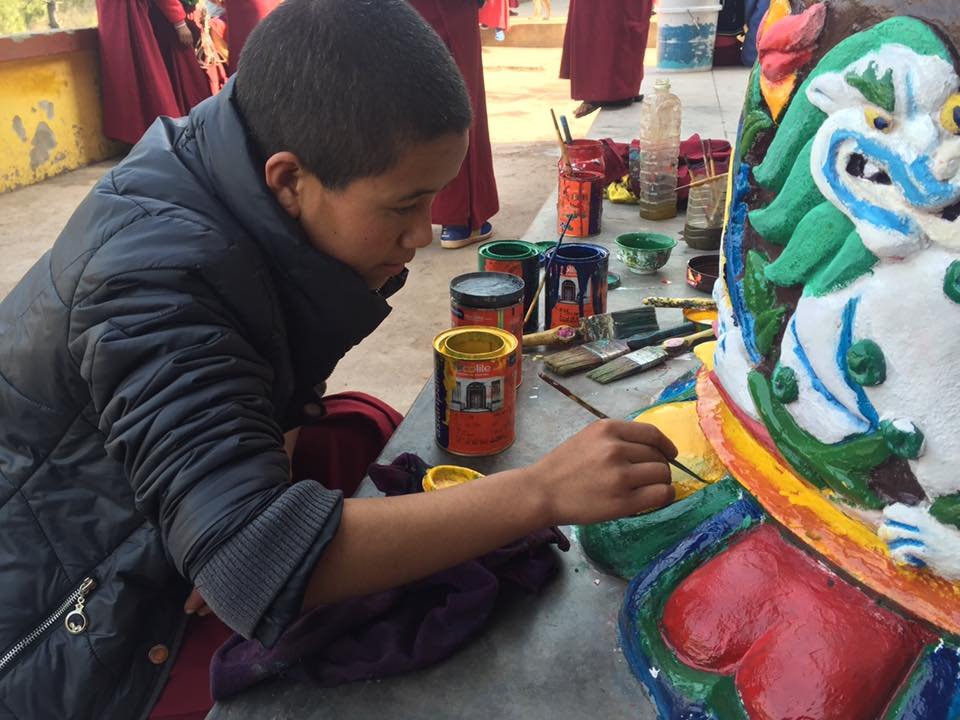By Mariam Ajami | Programs Administrator
When entering a new project no one sets out to fail. The idea of failure is not an option. Yes, there are risks when implementing a new idea, and obstacles that you know will pop up but failure is not one of them. The Bon are a minority Tibetan ethnic group that fled to India when the Chinese invaded Tibet in 1959. In 1968, the Bon established a community in Dolanji, India. Today, in addition to the temple, monastery and dialectic school for the monks, the community has three children's hostels, a school (through 12th class), a health center and a community farm. The students in the Bon community come from Tibet, Mongolia, India, Nepal and Bhutan. The students are either orphans (lost both parents) or “semi-orphans” (lost one parent). Creating Hope International set out to work with the Bon non-profit at the monastery to make primary through post-secondary education possible for the community's children and youth and help them raise funds for the projects related to the children.
The plan: Invited by the Abbott, the executive director of CHI went over to India to train the monastery nonprofit leaders how to write up proposals and reports to get the projects funded and underway. What went wrong? The leaders did not think that this was as important as the other work they were doing and were reluctant to work with a western woman who they thought was going to tell them what they needed. They wanted funding and they knew what they needed; they just did not have a proper process in place that could be presented to donors for funding. And they were not sure of this westerner. Fear of the unknown. What to do? The CHI director was in a predicament. She had been told in the U.S. that she was welcome, and she anticipated completing the training in two weeks. But when she got to Dolanji, there was no one to work with. So she stepped back and waited, realizing she was not in America. The original plan had to be adjusted to expectations and sensitivity of the Tibetan Bon culture and people. She had to be patient. Four weeks went by. Every day she came to the monastery and circumambulated the temple with the villagers. What happened? When the leaders (the monks) were ready and got used to seeing her, they finally decided to meet with her for an hour each day. The first day, she asked them, “What is your most important need? “ A water storage tank they said. She asked them many details about the kind of storage tank they needed and what the costs were. After an hour, they left and she typed up what she had learned in a proposal and presented a proposal and budget to them based on what they had told her. They were amazed. It was just a few pages but it was very simple and clear and they knew that westerners would like it. She met with them for an hour for 6 days, listening to their other needs and asking them questions. Each day there was a new proposal and budget in English. The result? In the first year, after presenting their proposals to interested donors, the Tibetans were able to get all six projects funded. Moreover, they were very eager to learn more, including how to write reports.
The lesson learned? While sometimes we may set forth a process to achieve a goal, we may encounter bumps in the road or obstacles to be overcome. The key is to recognize what is happening, how we can improve on it, and continue on our set path undeterred from achieving our goal.
The Bon people have come a long way from the time when CHI first set out to give assistance. They now write their own proposals, based on what they learned. And in the years, following they also learned how to report back to their donors. As always we hope you reflect on their journey and CHI’s to make a difference and thank you for helping the Bon people care for children and give them a quality education.
Project reports on GlobalGiving are posted directly to globalgiving.org by Project Leaders as they are completed, generally every 3-4 months. To protect the integrity of these documents, GlobalGiving does not alter them; therefore you may find some language or formatting issues.
If you donate to this project or have donated to this project, you can receive an email when this project posts a report. You can also subscribe for reports without donating.
Support this important cause by creating a personalized fundraising page.
Start a Fundraiser